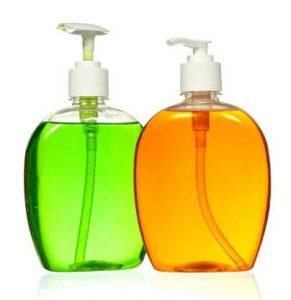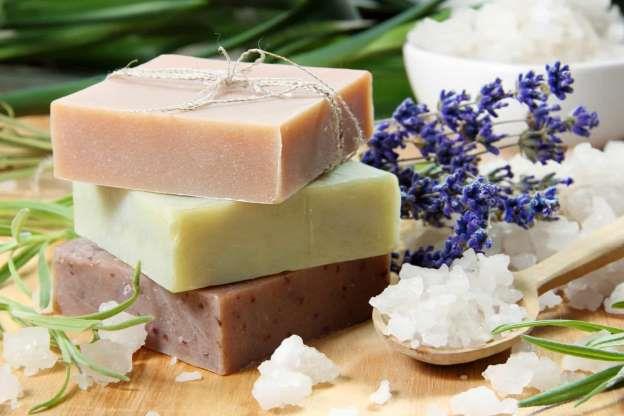What exactly is soap, and why do we use it?
(MENAFN- NewsIn.Asia) November 3 - In the battle against the coronavirus, we've all been advised to handwash regularly with soap to help prevent the spread of COVID-19. But have you stopped to think about what soap actually is, where it comes from, and how it's made?
Click through the following gallery for a fascinating look at the origins of this vital cleansing product.
Soap as an antibacterial substanceHandwashing with soap is critical in the fight against coronavirus. We've been advised to scrub all surfaces of the hands for at least 20 seconds, and carry out this procedure several times a day.
What is soap?Of course, we've always used soap, but what is it, where did it come from, and how is it made?
A cleansing agentSoap is essentially a cleansing agent created by the chemical reaction of a fatty acid with an alkali metal hydroxide. Put more simply, it's made by mixing fats and oils with a base (for example, clear glycerin).
Soap in antiquityHumans have used soap for millennia. Ancient writings suggest it was known to the Phoenicians as early as 600 BCE. Apparently, the Romans used it too. But evidence also exists of the production of soap-like materials around 2800 BCE in Babylon.
Making soapBy the 8th century, soap was being made throughout the Muslim world, and exported from the Levant to Europe. Pictured is the historical part of the soap museum in Sidon, Lebanon.
Early production methodsDuring these times, soap was made by boiling tallow (an animal fat) or vegetable oils (typically olive oil) with alkali containing wood ashes. Aleppo soap (pictured), still manufactured in Syria today, originally employed this production method.
Arrival in EuropeThe Middle Ages saw Europe begin to clean up its act. Soapmaking was already known in Italy and Spain, and by the 15th century the semi-industrialized professional manufacture of soap was taking place in France, notably in Toulon and Marseilles.
Only for the wealthySmall scale and costly methods of production, plus a negative social attitude towards cleanliness, made soap a luxury item affordable only to the wealthy until the late 18th century.
Important industryFrench chemists Nicolas Leblanc (1742-1806) and Michel-Eugène Chevreul (1786-1889) are credited with refining the process of soapmaking. This made soap production less expensive and, as people began to take personal hygiene more seriously, soapmaking emerged as an important industry.
Industrial RevolutionThe Industrial Revolution in Great Britain prompted large-scale soap production. Low-priced, good quality soap quickly became available.
Lever BrothersIn 1886, William Hesketh Lever and his brother, James, bought a small soap works in Warrington, Cheshire, and founded what is still one of the largest soap businesses in the world, formerly called Lever Brothers and now known as Unilever.
Advertising soapThe advent of Lever Brothers and other soap manufacturing businesses ushered in the age of large-scale publicity campaigns. This advertisement for Sunlight household soap recommends it to the housewife by claiming it would make life easier.
Liquid soapLiquid soap wasn't invented until the 19th century, when a patent was issued in 1865 by William Shepphard for a liquid version of the soap bar.
PalmoliveIn 1898, B.J. Johnson developed a soap derived from palm and olive oils; his company, the American B.J. Johnson Soap Company, introduced the "Palmolive" brand soap that same year. It became so popular that he renamed the company Palmolive.
Claus PortoMeanwhile in Europe, companies like Claus & Schweder, founded in 1887 by two Germans living in Portugal, were busily manufacturing soap and perfume. Known today as Claus Porto, the company is present in 50 countries.
Proctor & GambleCandlemaker William Procter and soapmaker James Gamble founded Proctor & Gamble (P & G) in 1837. P & G was one of the first soap brands to sponsor radio broadcasts and advertise its products. These took on the form of "soap operas." Pictured: a P & G advertisement for White Naphtha Soap.
Soap operaThese White Naphtha Soap-sponsored radio broadcasts were later developed into television shows. Today, this format is still referred to as a "soap opera."
Liquid soap dispenserIn 1978, American entrepreneur Robert Taylor developed the liquid soap dispenser. Later, the Minnetonka Corp. introduced SoftSoap, inspired by Taylor's pondering the mess that bar soap makes in a dish.

© Shutterstock
Liquid soap dispenserAfrican black soap
Made traditionally from the ash of locally harvested African plants, this soap has become a popular toiletry product in North America due to its benefits on oily and acne-prone skin. It's often exported through fair trade groups. Pictured: Dudu-Osun, a brand of African black soap. (Photo: Wikimedia / CC BY-SA 4.0 )
cally harvested African plants, this soap has become a popular toiletry product in North America due to its benefits on oily and acne-prone skin. It's often exported through fair trade groups. Pictured: Dudu-Osun, a brand of African black soap. (Photo: Wikimedia/CC BY-SA 4.0)Castile soap
Made today in a style similar to that originating in the Castile region in Spain way back in the Middle Ages, Castile soap combines 100% pure olive oil with lye and water.
Marseille soapSimilarly, Marseille soap orSavon de Marseilleis a traditional hard soap made from vegetable oils that has been produced around Marseille, France for about 600 years.
Vegan soapVegan soaps (or vegetable soaps) are made from fats or oils of vegetable origin rather than animal fats. (Photo: Wikimedia / CC BY-SA 3.0 )
Vegan soaps (or vegetable soaps) are made from fats or oils of vegetable origin rather than animal fats. (Photo: Wikimedia/CC BY-SA 3.0)Chamomile soap
Renowned for its soothing and relaxing properties, chamomile when used in a soap gently nourishes and cleanses the skin.
Rose soapFloral scents have been used in bath and hand soaps for centuries, and the fragrance of rose is especially timeless. The flower is a classic symbol of love, romance, and beauty, and essential rose oil in soap adds a wonderfully light and romantic touch that is both beguiling and inspirational.
Citrus soapA citrus-scented soap (for example, infused with lemon, orange, or grapefruit) has excellent lather, perhaps because of the sugar in the juice they are made with.
Sandalwood soapSandalwood soap is gentle on all skin types, and is known to treat dry and dull skin. It's also a great moisturizer.
Lavender soapLavender is one of the most popular fragrance oils used in soap. A delightful scent used for centuries in aromatherapy, perfumes, and medicine, lavender is known for its calming effect on the body.
Charcoal soapCharcoal soap is known to be highly beneficial in the treatment of acne. Indeed, soap with activated carbon will also adsorb toxins and remove skin impurities and oils on and below the skin.
Coconut soapCoconut oil soap is an excellent moisturizer for both the skin and the hair. Refreshing and creamy, it contains antibacterial properties that help rid the skin of impurities.
Back to basicsA soap from Portugal,azul e branco(blue and white) soap was popularly used to wash linen, carpets, and floors. Commercial demand forazul e brancohas increased recently as the coronavirus outbreak tightens its grip. (Photo: Wikimedia / CC BY-SA 3.0 )
A soap from Portugal, azul e branco (blue and white) soap was popularly used to wash linen, carpets, and floors. Commercial demand for azul e branco has increased recently as the coronavirus outbreak tightens its grip. (Photo: Wikimedia/CC BY-SA 3.0)See also: Bizarre personal hygiene habits.
Source - Stars Insider
Soap Soaps Use
Legal Disclaimer:
MENAFN provides the
information “as is” without warranty of any kind. We do not accept
any responsibility or liability for the accuracy, content, images,
videos, licenses, completeness, legality, or reliability of the information
contained in this article. If you have any complaints or copyright
issues related to this article, kindly contact the provider above.
Most popular stories
Market Research

- Latin America Mobile Payment Market To Hit USD 1,688.0 Billion By 2033
- Nutraceuticals Market Size Projected To Witness Strong Growth During 2025-2033
- BTCC Summer Festival 2025 Unites Japan's Web3 Community
- Meme Coin Little Pepe Raises Above $24M In Presale With Over 39,000 Holders
- Excellion Finance Launches MAX Yield: A Multi-Chain, Actively Managed Defi Strategy
- What Is The Growth Rate Of The Europe Baby Food And Infant Formula Market In 2025?





















Comments
No comment